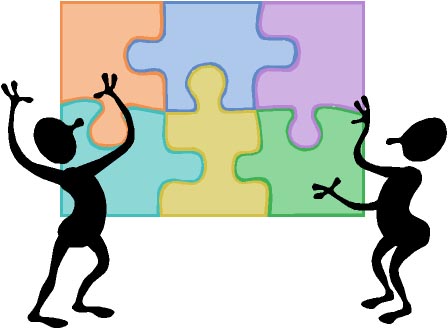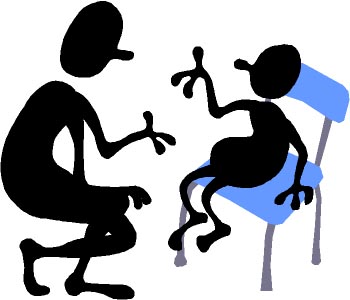Classroom Behaviour & Management Strategies
Classroom Behavior
Management Strategies
by Dr. Mac
The new home page can bring you back here to this strategies section if you wish to return. It also leads you to free video and audio podcasts, powerpoint presentations, interviews, and training videos of students misbehaving in class. Are you in the right place? If so, scroll down past the introductory material.
![]()
 The Basics of Behavior Management
The Basics of Behavior Management
- Discipline 101: A PRIMER on behavior management
- A page for NEW, NOVICE, & STRUGGLING TEACHERS
- Managing behavior via CLASSROOM DESIGN
- A CHECKLIST(to assess your behavior management skills)
![]()
Tips for Becoming an Effective and Well-liked Behavior Manager
- Phrasing comments to enhance chances of COMPLIANCE & build SELF DISCIPLINE in kids (and us)
- Different ways to “CATCH ‘EM BEING GOOD” (your most effective behavior change strategy)
- PROBLEMS with “Catching ‘Em Being Good” (AND how to do it right)
- Giving EFFECTIVE (versus ineffective) PRAISE
- Praising PRAISE RESISTANT KIDS
- Giving CRITICISM THAT HELPS (not hurts)
- Should we make kids APOLOGIZE when they’re not sorry?
- Getting RESPECT by giving it away
- Managing behavior with your INSTRUCTIONAL STYLE
- Managing the behavior of GROUPS
- Promoting POSITIVE PEER PRESSURE in your classroom (Students help you manage the behavior of their classmates)
- Quieting the NOISY CLASSROOM
- Raising ACHIEVEMENT TEST SCORES
- Remembering to FOCUS ON YOUR INITIAL GOAL(when kids get you flustered)
- SCENARIOS for thought and discussion
![]()
Strategies for Addressing Common Behaviors & Conditions
- ADD and ADHD (Attention Deficit [Hyperactivity] Disorder)
- Aggression & Violence (Preventing & defusing rage)
- Aspergers Syndrome
- Autism
- “Backsliding”/Regression to former behaviors (after having made progress on behavior)
- Bullying
- Cursing, Cussing, Swearing, & Foul Language
- Defiant, oppositional, resistant, and/or uncooperative behavior
- Depression in Children
- Lying
- Not Motivated and/or Doesn’t Care about schooling
- Sensory Integration Disorder (Might misbehavior be due to the brain having problems making sense of incoming sensory information?)
- Tattling
- Testing The Limits (after the beginning-of-the-year “honeymoon” period)
![]()
 Step-by-Step “How To Do It” Pages For:
Step-by-Step “How To Do It” Pages For:
- Assertive Discipline
- Cooperative Learning (Allowing students to learn in structured teams)
- Creating your own classroom Behavior Management System
- Using Good-Natured Humor (Using wit to manage behavior)
- Inclusion/Mainstreaming (of students with behavior disorders)
- The IRS Plan (A home/school cooperative behavior management plan)
- The 10 Step Approach (A sequentially implemented approach)
- The 10-R Plan (A 10 step plan for dealing with non-compliant or violent behavior)
- WEANING kids from rewards and developing internal motivation
![]()
How to Assess  and Measure Behavior
and Measure Behavior
- Figuring out Why Kids Misbehave (and what to do about it)
- Behavioral Recording (Ways to accurately measure behaviors)
- Assessing Readiness for Positive Behavior Change (Is this youngster ready to change? How do we help?)
- The Youth Audit Form & Quadrant Checklist (Instruments that improve the “Developmental Audit” ala the Circle of Courage model)
- Sociograms (A way to assess student interaction patterns)
- Functional Behavior Assessment (as per IDEA…Figuring out the reason for the behavior)
- Manifestation Determination (as per IDEA…Was that action related to the disability?)
![]()
The Applied Behavior Analysis Model and Its Interventions
- How behavior develops and how to change it for the better
- Contracts
- Differential Reinforcement Procedures (Reducing misbehavior in positive ways)
- Overcorrection (Using repetition to deter future misbehavior)
- Response Cost (Implementing penalties for misbehavior)
- Schedules of Reinforcement (Deciding how often to give rewards)
- Self monitoring (Students keep track of their own behavior, thus building self-control)
- Shaping (Building a desired behavior that the student doesn’t show at present)
- Task Analysis (Breaking a task into the steps to be followed for its completion)
- Time Out (Removing a student from a setting that is promoting the misbehavior)
- Token Economies and Point Systems
![]()
The PsychoEducational & Cognitive Behavioral Models & Interventions 
- How behavior develops and how to change it for the better
- Understanding conflict between teachers and students
- The “Circle of Courage” model for working with troubled students
- Bibliotherapy(The therapeutic use of reading with troubled kids)
- Classroom Counseling
- Classroom Meetings
- “I Messages” (A non-confrontational way to address misbehavior)
- LSI & LSCI(Life Space Interview & the more recent Life Space Crisis Intervention counseling techniques for teachers)
- “Active Listening” (helping kids make sense of incidents & issues)
- Play Therapy (The therapuetic use of play with emotionally troubled children)
- Problem Solving (for kids who get into arguments, act impulsively, or make poor choices about their behavior)
- Social Skills Training (for kids who don’t interact well with others)
![]()
How to Implement Schoolwide Practices
- “Bullet-proofing” your school (Non-security, school climate ways to avoid school shootings)
- Peer Mediation (Kids helping kids to solve disputes)
- School-wide behavior management systems (Getting everyone on the same page)
- Helping kids cope with catastrophes (Terrorist attacks, floods, tornadoes, hurricanes, etc.)
- An overview of IDEA (The “special ed” law in the United States)
![]()
 Interesting and/or Humorous Readings
Interesting and/or Humorous Readings
- “Murphy’s Law” as it applies to management of student behavior
 (Anything that can go wrong, will.)
(Anything that can go wrong, will.)
- Need a chuckle?
 (A humorous article about the use of technology to manage behavior)
(A humorous article about the use of technology to manage behavior) - HA!
 (Cartoons about behavior management)
(Cartoons about behavior management) - Random thoughts & FUNNY STORIES
- Rantings and Ravings
- -How to respond to public criticism about teachers and education
- -Don’t be a mean teacher
- Learning Disabilities & the behavioral hurdles that often accompany them
- Culture, Language, Gender, and Sexual Orientation (Contents are listed below)
- How cultural differences in behavior are often mistaken as being misbehavior Is it a true behavior problem or is it a cultural difference? How a mismatch between an instructor’s teaching style and a student’s culturally
different style of learning can create misbehavior Recommendations for serving culturally different youngsters who have emotional and behavioral disordersIs it child abuse or just a cultural difference in childrearing practices?
- Ten Tips for reaching and teaching recent immigrant students: Helping them to create a positive “cross cultural identity”
- How to help new immigrant students adjust well to your classroom (10 tips for working with recent immigrant kids)
- Pink slips for TESOL teachers? Will language translation software reduce the need for English language teachers? (Humor) Amy’s Story: The development of one ESL student’s cross-cultural identity (The emotional adjustment process immigrant youngsters go through when they move to North America) The relationship between first and second languages and culture: Finding a cross-cultural identity (Discusses influences on the “Americanization” process)
Understanding and meeting the needs of Gay/Lesbian/Bi-sexual youth in school.
- Why are boys overrepresented in programs for students with emotional and behavioral disorders?
- How cultural differences in behavior are often mistaken as being misbehavior Is it a true behavior problem or is it a cultural difference? How a mismatch between an instructor’s teaching style and a student’s culturally
![]()

- Other Web Sites (related to behavior management)

Dr. Mac’s book is written FOR kids who need to learn to make better behavior choices. Check out the reviews on www.Amazon.com! Click here for information about the book
(It’s for kids, but teachers, counselors and parents can read it with them too.)
The ONLY book written FOR kids with behavior problems.
Click here for reviews by teachers of students with behavior disorders
Click here for reviews by experts in the field of behavior disorders
Click here for reviews by professional organizations and on-line book sellers
Click here for reviews by kids
Click here for reviews by parents
![]()
Pages For Our Partners in Positive Behavior Building
- Working with PARA PROFESSIONALS
- A page for SPECIAL EDUCATION Teachers (of kids labeled “Behavior Disordered”)
- A page forADMINISTRATORS (to evaluate the behavior managment skills of teachers)
- A page for SUBSTITUTE / SUPPLY Teachers (& full time teachers who want to make things easier for them)
- A page for PARENTS of kids with behavior problems
 Ready to use the ideas on this site? Test your knowledge & skills! What would you do if a student… ?
Ready to use the ideas on this site? Test your knowledge & skills! What would you do if a student… ?
Free Training Videos
- Other Stuff
- Who is Dr. Mac?

- Dr. Mac’s Professional Development WORKSHOPS & KEYNOTE ADDRESSES
- How to support this site (Hat in hand)
- Print a flyer for your school’s bulletin board (Or place it in a mean teacher’s mailbox)
- DISCLAIMER & site information (Putting the onus on you.)
- Who is Dr. Mac?
 BehaviorAdvisor.com has been visited by teachers from 140 countries/territories on 6 continents:
BehaviorAdvisor.com has been visited by teachers from 140 countries/territories on 6 continents:
Abu Dhabi, Afganistan, Albania, Algeria, American Samoa, Anguilla, Antigua, Argentina, Aruba, Australia, Austria, Bahamas, Bahrain, Bangladesh, Barbados, Belgium, Bermuda, Belize, Bhutan, Bolivia, Bosnia-Herzegovina, Botswana, Brazil, Brunei Darussalam, Bulgaria, Cameroon, Canada, Chile, China, Colombia, Costa Rica, Croatia, Cyprus, Czech Republic, Denmark, Dominica, Dominican Republic, Ecuador, El Salvador, Egypt, England, Estonia, Ethiopia, Faroe Islands, Federation of St. Kitts and Kevis, Fiji, Finland, France, Gambia, Georgia, Germany, Ghana, Greece, Guam, Guatemala, Guernsey, Guyana, Haiti, Honduras, Hong Kong, Hungary, Iceland, India, Indonesia, Iran, Iraq, Ireland, Isle of Man, Israel, Italy, Jamaica, Japan, Jordan, Kenya, Kuwait, Latvia, Lebanon, Lithuania, Macau, Malawi, Maldives, Malta, Malaysia, Republic of Mauritius, Mexico, Montserrat, Morocco, Nepal, Netherlands, New Zealand, Nigeria, Northern Ireland, Norway, (the Sultanate of) Oman, Pakistan, Palestine, Panama, Paraguay, Peru, Philippines, Poland, Portugal, Puerto Rico, Qatar, Romania, Russia, Rwanda, Saint Lucia, Saudi Arabia, Scotland, Serbia, Singapore, Slovakia, South Africa, South Korea, Spain, Sri lanka, St. Vincent & the Grenadines, Sweden, Switzerland, Syria, Taiwan, Tajikistan, Tanzania, Thailand, Tonga, Trinidad & Tobago, Tunisia, Turkey, Uganda, Ukraine, United Arab Emirates, United States, Uruguay, Venezuela, Viet Nam, (the)Virgin Islands,Wales, Zambia, and Zimbabwe.
If you’re visiting from somewhere else, please let Dr. Mac know If I’m correct, this one is “Cloud 9“
If I’m correct, this one is “Cloud 9“